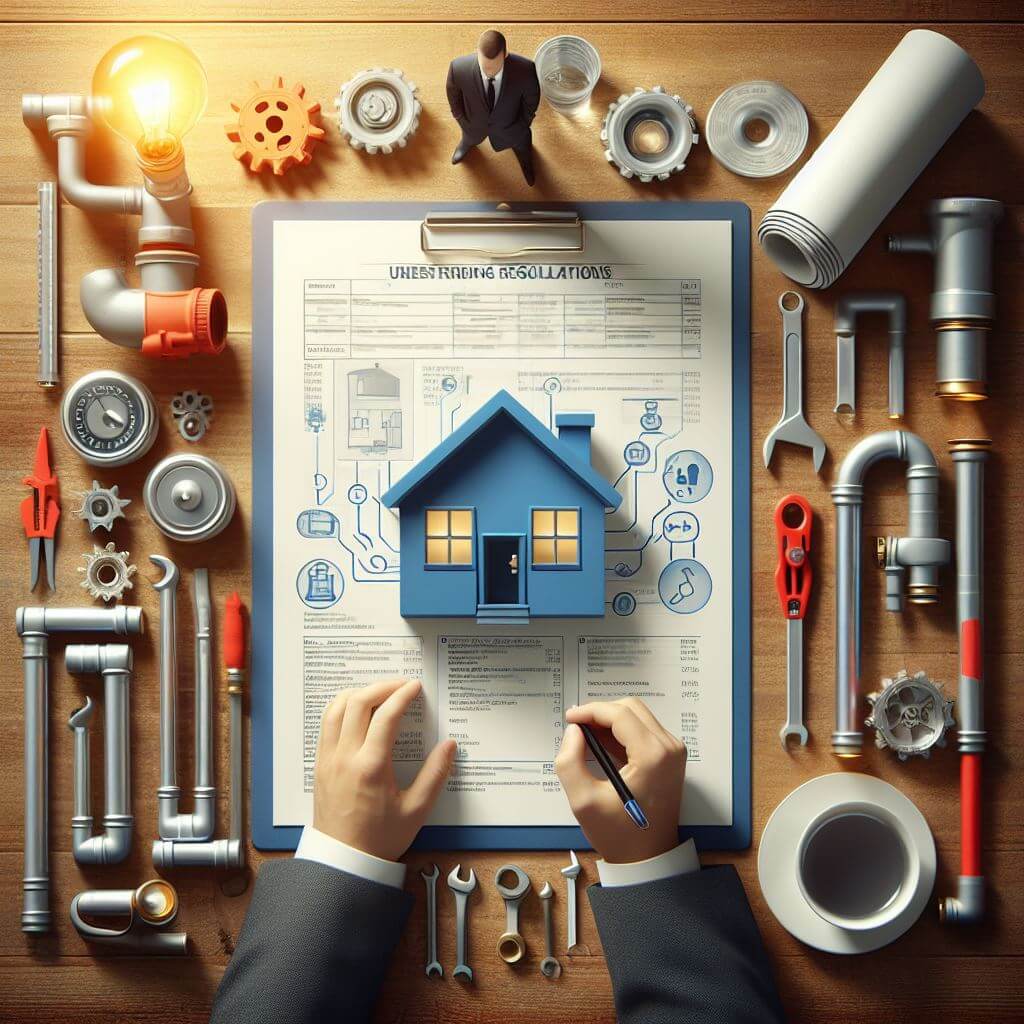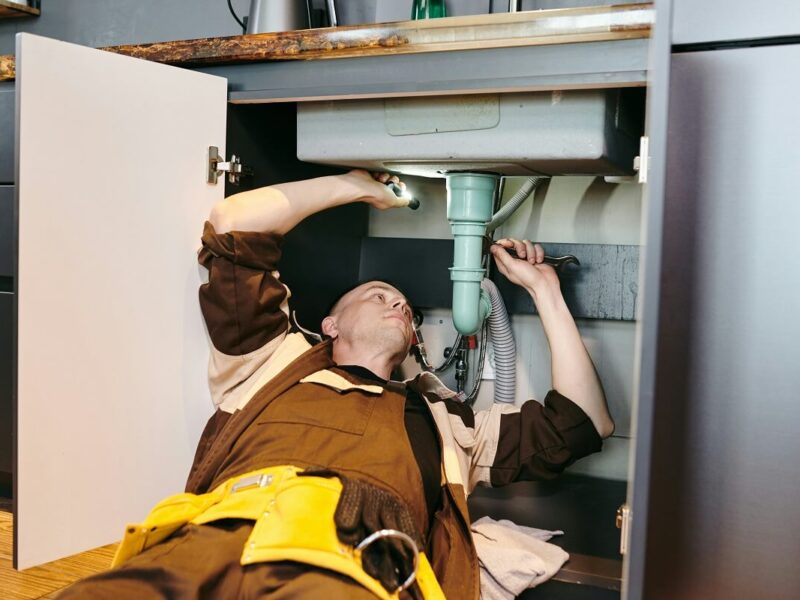Grasping the Foundations of Home Plumbing: A Beginner's Primer
Grasping the Foundations of Home Plumbing: A Beginner's Primer
Blog Article
On this page on the next paragraphs you can discover lots of extremely good information and facts around Plumbing Basics Every Homeowner Should Know.

Plumbing is a vital element of any home, in charge of supplying tidy water for alcohol consumption, cooking, and showering, along with eliminating wastewater safely. Recognizing the basics of home plumbing is crucial for every property owner to guarantee appropriate upkeep, troubleshooting, and, if needed, repair services. In this beginner's overview, we'll cover the essential principles of home plumbing to help you come to be extra familiar with just how it works.
Water Heating System
The water heating unit is accountable for home heating water for residential usage, consisting of showering, cooking, and cleaning. Typical sorts of water heaters consist of tank-type water heaters, tankless (on-demand) hot water heater, and heatpump water heaters. The hot water heater is attached to the water system system and delivers hot water to plumbing components as needed.
Drainage System
The drain system removes wastewater from your home and carries it away to a sewage treatment facility or septic tank. It contains a network of pipelines, installations, and components that transfer wastewater from plumbing fixtures to the main drain line or sewage-disposal tank. Proper drainage is important to protect against clogs, back-ups, and sewer leakages.
Air flow System
The air flow system aids keep correct air pressure and prevent sewage system gases from entering your home. Vent pipelines, also known as vent stacks, extend from plumbing fixtures to the roofing system, enabling sewer gases to leave safely outdoors. Air flow pipes additionally allow air to get in the water drainage system, assisting in smooth wastewater circulation and protecting against suction or vacuum results.
Water Supply System
The supply of water system brings tidy water into your home from a municipal water source or an exclusive well. It includes a major water line that links to your home's plumbing system, usually located underground. A water meter gauges the amount of water eaten, while a shut-off valve allows you to manage the circulation of water right into your home.
Plumbing Fixtures
Plumbing fixtures are tools that deliver water to numerous parts of your home and consist of sinks, faucets, commodes, showers, bath tubs, and devices such as dish washers and washing machines. Each component is attached to the supply of water system through pipelines and fittings and might have its shut-off valve for upkeep or emergencies.
Common Plumbing Tools
Having the right devices on hand is necessary for carrying out fundamental plumbing repair services and maintenance jobs. Usual plumbing devices consist of flexible wrenches, monkey wrench, pliers, pipe cutters, hacksaws, plungers, augers (or drainpipe serpents), and Teflon tape. Having these devices readily available can assist you take on small plumbing concerns successfully.
Basic Plumbing Repairs
While some plumbing repair work may require professional aid, many usual issues can be addressed with standard DIY techniques. Knowing just how to fix a dripping faucet, unclog a drain, change a commode flapper, or repair a trickling showerhead can conserve you time and money on plumbing fixings.
Verdict
Recognizing the essentials of home plumbing is essential for every single property owner to preserve a safe, functional, and efficient plumbing system. By familiarizing yourself with the water system, plumbing components, water drainage system, air flow system, typical plumbing tools, and standard fixings, you can with confidence attend to minor plumbing concerns and guarantee your home's plumbing system operates efficiently.
Plumbing for Beginners: A Comprehensive Guide
If you’re a beginner when it comes to plumbing, don’t worry; you’re not alone. Plumbing may seem intimidating, but with the right knowledge and a little practice, you can handle many common plumbing issues on your own. In this comprehensive guide, we will demystify the world of plumbing for beginners, providing you with the basic knowledge and skills needed to tackle common plumbing problems and even take on some DIY plumbing projects.
The Importance of Basic Plumbing Knowledge for Beginners:
First and foremost, basic plumbing knowledge gives you a solid foundation. It helps you grasp the key concepts and terminology that are essential in this field. By learning the basics, you’ll be able to build upon that knowledge and tackle more complex plumbing tasks in the future.
Having a basic understanding of plumbing also enables you to handle common issues that may arise in your home. Picture this: a leaky faucet or a clogged drain. With some basic plumbing knowledge, you’ll have the confidence to troubleshoot and fix these problems on your own. It saves you from unnecessary expenses and the hassle of waiting for a professional to arrive.
As a beginner, learning the basics of plumbing empowers you to take care of your own home. It gives you a sense of independence and self-reliance. You’ll no longer have to rely solely on professionals for every small issue that pops up. Instead, you can handle many tasks yourself, saving time and money in the process.
Remember, everyone starts as a beginner. Embrace the learning process and take small steps to expand your plumbing knowledge. There are plenty of online resources, tutorials, and even local workshops that talk about plumbing for beginners.
Essential Tools for Plumbing for Beginners
As you start your plumbing journey, having the right tools in your toolbox is crucial. Let’s explore some of the must-have tools:
Adjustable Wrench:
This versatile tool is a staple in any plumber’s toolbox. It allows you to tighten or loosen nuts and bolts of various sizes. Make sure to have an adjustable wrench with a comfortable grip.
Pipe Wrench:
A pipe wrench is specifically designed for gripping and turning pipes. It has serrated jaws that provide a strong grip, making it easier to loosen or tighten threaded pipes and fittings.
Plunger:
The plunger is a simple yet effective tool for clearing clogged drains and toilets. It creates suction when you push and pull, helping to dislodge blockages. Keep a good-quality plunger handy for those unexpected clogs.
Pipe Cutter:
When it comes to cutting pipes, a pipe cutter is your go-to tool. It creates clean, precise cuts without damaging the pipe. Look for a pipe cutter that can handle the pipe sizes you’re working with.
Hacksaw:
A hacksaw is useful for cutting through pipes, screws, and other materials. It’s a versatile tool that can handle different cutting tasks. Remember to use a blade suitable for cutting metal.
Tape Measure:
Accurate measurements are crucial in plumbing. A tape measure allows you to measure pipe lengths, distances, and dimensions accurately. Opt for a sturdy tape measure that extends a good length.
Pliers:
Pliers come in handy for various tasks, such as gripping, bending, and cutting. Slip-joint pliers with adjustable jaws are great for gripping pipes, nuts, and bolts.

As a devoted person who reads on What to Know About Plumbing: Basics, Tips, and Insights, I thought sharing that excerpt was a smart idea. So long as you liked our blog posting please do not forget to share it. Thanks a lot for your time. Revisit us soon.
Visit Page Report this page